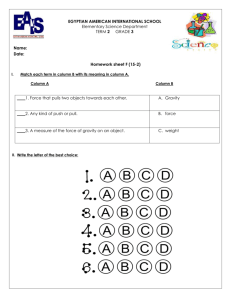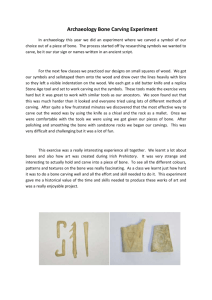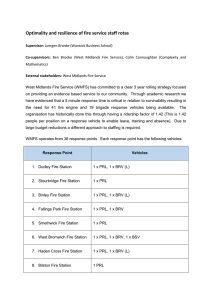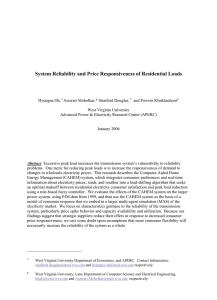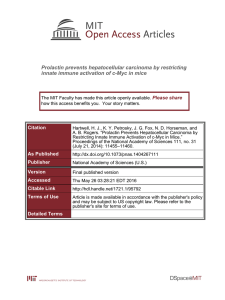College of Liberal Arts and Sciences Research Colloquium
advertisement
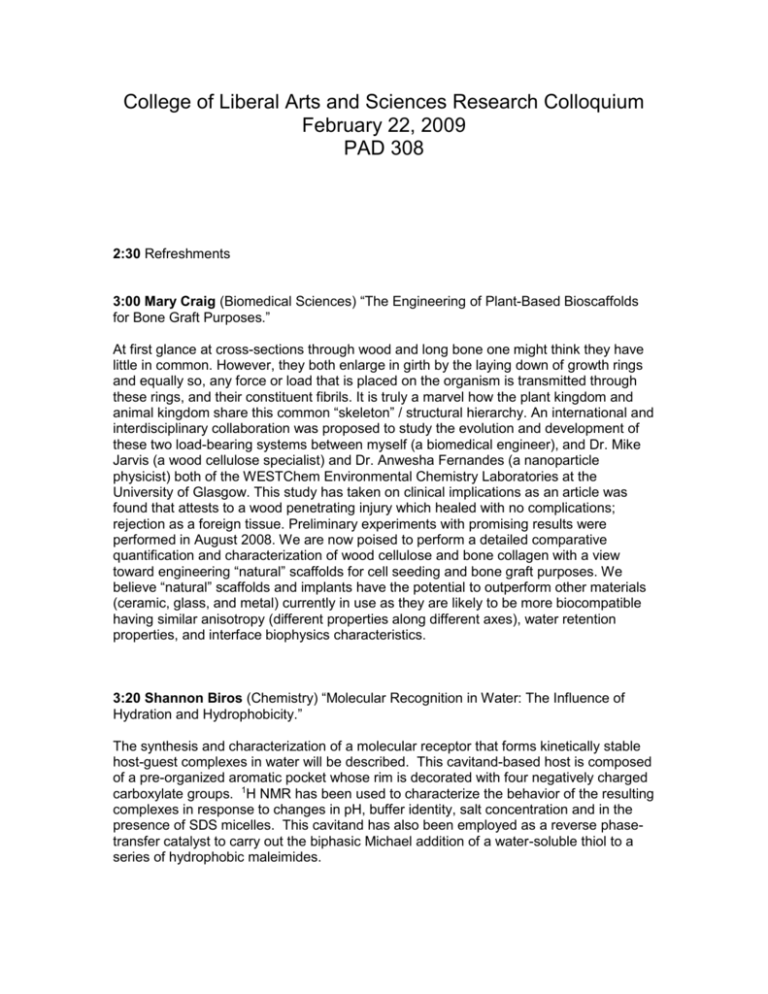
College of Liberal Arts and Sciences Research Colloquium February 22, 2009 PAD 308 2:30 Refreshments 3:00 Mary Craig (Biomedical Sciences) “The Engineering of Plant-Based Bioscaffolds for Bone Graft Purposes.” At first glance at cross-sections through wood and long bone one might think they have little in common. However, they both enlarge in girth by the laying down of growth rings and equally so, any force or load that is placed on the organism is transmitted through these rings, and their constituent fibrils. It is truly a marvel how the plant kingdom and animal kingdom share this common “skeleton” / structural hierarchy. An international and interdisciplinary collaboration was proposed to study the evolution and development of these two load-bearing systems between myself (a biomedical engineer), and Dr. Mike Jarvis (a wood cellulose specialist) and Dr. Anwesha Fernandes (a nanoparticle physicist) both of the WESTChem Environmental Chemistry Laboratories at the University of Glasgow. This study has taken on clinical implications as an article was found that attests to a wood penetrating injury which healed with no complications; rejection as a foreign tissue. Preliminary experiments with promising results were performed in August 2008. We are now poised to perform a detailed comparative quantification and characterization of wood cellulose and bone collagen with a view toward engineering “natural” scaffolds for cell seeding and bone graft purposes. We believe “natural” scaffolds and implants have the potential to outperform other materials (ceramic, glass, and metal) currently in use as they are likely to be more biocompatible having similar anisotropy (different properties along different axes), water retention properties, and interface biophysics characteristics. 3:20 Shannon Biros (Chemistry) “Molecular Recognition in Water: The Influence of Hydration and Hydrophobicity.” The synthesis and characterization of a molecular receptor that forms kinetically stable host-guest complexes in water will be described. This cavitand-based host is composed of a pre-organized aromatic pocket whose rim is decorated with four negatively charged carboxylate groups. 1H NMR has been used to characterize the behavior of the resulting complexes in response to changes in pH, buffer identity, salt concentration and in the presence of SDS micelles. This cavitand has also been employed as a reverse phasetransfer catalyst to carry out the biphasic Michael addition of a water-soluble thiol to a series of hydrophobic maleimides. 3:40 Andrew Spear (Philosophy) “Information Ontology: At the Intersection of Philosophy, Computer Science and the Biomedical Sciences.” Ontology, the philosophical study of existence and of the categories of being, has recently found new application as a tool in the attempt to create logically structured, reusable and integratable computer representations of information, especially in the biological and medical sciences. The talk will be a brief overview of philosophical ontology and of its role and relevance in the interdisciplinary field of information ontology. 4:00 Osman Patel (Biology) “The physiological price of a visit to International Space Station.” Prolactin (PRL) is a protein hormone that is predominantly synthesized and secreted by the pituitary gland. It is linked to a multitude of biological functions in vertebrates including metabolism. The PRL pleiotropic effects are mediated by membrane-anchored receptors (PRLR) which have multiple forms. The principal transducers of PRL are the long form (PRLR-L) and the short form (PRLR-S) of receptors. Chronic centrifugation studies in the last decade have shown diverse effects of altered gravity on mammalian metabolism, reproduction and mammary gland development. Perturbations in PRL concentration has been suggested as a trigger for the above biological effects linked to altered gravity. However, our recent study revealed that supplementation with PRL did not abrogate the altered gravity induced physiological defects. These results led us to hypothesize that downregulation of PRLR in periparturient (period close to birth) dams exposed to altered gravity precipitate the aberrant phenotype. Therefore, our objective was to compare the distribution pattern of PRLR-L and PRLR-S transcripts in key metabolic (adipose, liver, mammary) tissues and pituitary gland of stationary control and hypergravity exposed periparturient rats. (Supported by NASA NNA05CP91A).



